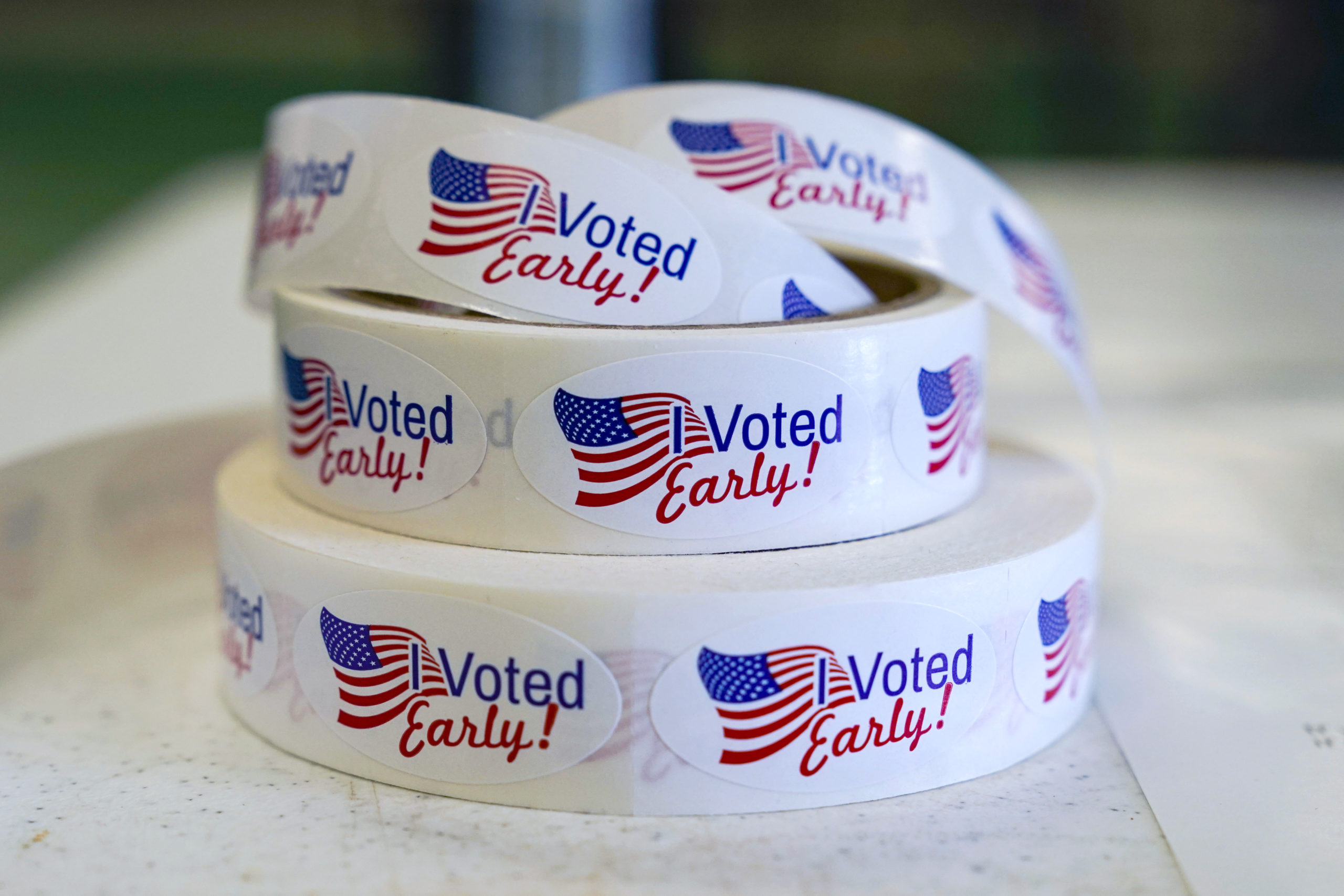Standards adopted for amending pleadings
By: dmc-admin//December 11, 2002//
 |
|
Hon. Margaret J. Vergeront
|
Under Section 802.09(1), a court may permit amendment of the pleadings, even after summary judgment has been granted to the opposing party, the Wisconsin Court of Appeals held on Dec. 5.
However, the court held that there is no presumption in favor of allowing such a late amendment, and the party seeking to do so must overcome the value of the finality of judgment.
Defamation Action
According to the complaint, Frank Allison specializes in training aggressive and dangerous dogs that are considered untrainable, and Angelina Mach agreed to have him train her dog, Chance, because the dog was aggressive, out of control, and had bitten several people.
Chance attacked Allison when he entered the dog’s kennel to put it on a leash, and he “hit Chance with a stick in order to defend himself from serious bodily injury or even death and to exit the kennel.”
Mach took Chance home the next day, and Chance died within a few days. The autopsy report showed that Chance died from severe thoracic disease, a condition pre-existing the dog’s stay with Allison, but that traumatic injuries may have contributed to death.
NBC-15, a television station, did a news report on the incident, and Mach brought suit against Allison for conversion. Allison counterclaimed against Mach and Channel 15 for defamation, later amending the complaint.
|
What the court held Case: Angelina Mach v. Frank Allison, No. 02-0928. Issue: What is the standard for permitting a party to amend pleadings after an adverse motion on summary judgment? Holding: The party seeking to amend must present a reason that is sufficient to overcome the value of the finality of judgment; factors include: why the party has not acted sooner, the length of time since the filing of the original complaint, the number and nature of prior amendments, and the nature of the proposed amendment; however, the absence of specific prejudice to the defendant is not a sufficient reason, in itself, for allowing amendment. Counsel: Angelina Mach, Madison, pro se; John L. Cates, Madison; Paul A. Kinne, Madison; Heath P. Straka, Madison, for appellant; Robert J. Dreps, Madison, for respondent. |
The first amended complaint asserted that the news report “negligently and falsely portrayed and implied that [he] was [Chance’s] killer …”
Channel 15 moved for summary judgment on the ground that Allison could not prove that the allegedly defamatory implication — that he was the dog’s killer — was false. In support of its motion, Channel 15 relied on the affidavit of the veterinarian who performed the autopsy, which averred that, while the immediate cause of death was the pre-existing disease, traumatic injuries most likely contributed to death.
The trial court granted the motion, because the only evidence on the cause of the dog’s death suggested that the implication was true, not false.
Allison then moved to amend the complaint again. The court granted the motion to amend, stating that it has discretion to do so even after judgment where justice so requires, and that such motions should be liberally granted unless the other party would be prejudiced. The trial court concluded Channel 15 was not prejudiced because it had notice from the pleadings, briefs, and depositions of the operative facts and allegations giving rise to the defamatory implications of the broadcast.
Over Channel 15’s objections, Allison eventually filed yet a third amended complaint, alleging that the broadcast had negligently and falsely portrayed and implied that: (1) he intentionally killed the dog without provocation or justification; (2) he recklessly killed the dog without provocation or justification; (3) he intentionally caused serious bodily injury to the dog without provocation or justification; (4) he recklessly caused serious bodily injury to the dog without provocation or justification; (5) he intentionally caused serious bodily injury to the dog without being attacked by the dog; (6) he recklessly caused serious bodily injury to the dog
without being attacked by the dog; and (7) his training method was to beat or use violence as a means of training this dog.
On a second motion for summary judgment, the trial court again granted summary judgment in favor of Channel 15, and Allison appealed. In a decision by Judge Margaret J. Vergeront, the court of appeals affirmed that the first grant of summary judgment was proper.
However, the court reversed the trial court’s decision to permit Allison to amend the complaint, concluding that the court erroneously exercised its discretion in granting the motion. The court then set forth the standard that should be applied, and remanded for application of that standard.
Finally, the court held that, in the event that the trial court again grants the motion to amend after a proper exercise of discretion, summary judgment was improperly granted to Channel 15 on the seventh of Allison’s defamation allegations.
First Summary Judgment
The court began by affirming the first grant of summary judgment in favor of Channel 15. Allison alleged that the broadcast was defamatory for implying that he killed the dog.
However, the only evidence was the autopsy, which concluded that Allison did contribute to the dog’s death. Accordingly, the court of appeals agreed that Allison could not show the implication was false, and summary judgment was properly granted to Channel 15.
Amendment
The court then held that the trial court erroneously exercised its discretion in permitting the subsequent amendments to the complaint.
Section 802.09(1) provides in relevant part: “A party may amend the party’s pleading once as a matter of course at any time within 6 months after the summons and complaint are filed or within the time set in a scheduling order under s. 802.10. Otherwise a party may amend the pleading only by leave of court or by written consent of the adverse party; and leave shall be freely given at any stage of the action when justice so requires.”
At issue was the continued viability of the Wisconsin Supreme Court holding in Soczka v. Rechner, 73 Wis.2d 157, 162, 242 N.W.2d 910 (1976), that “it is within the trial court’s discretion to allow amendment of pleadings until and even after judgment.”
That decision was decided under a predecessor to the current statute, which provided, “The court may, at any stage of any action or special proceeding before or after judgment, in furtherance of justice and upon such terms as may be just, amend any process, pleading or proceeding….” Wis. Stat. 269.44 (1973).
The court concluded that the amendment to the statute did not affect the holding in Soczka, and that statement remains a correct statement of the law, even though the current statute no longer contains the phrase, “before or after judgment.”
The court reasoned, “The current language ‘at any stage of the action’ is plainly broad enough to include one week after a motion for summary judgment is granted. In addition, the relevant Judicial Council Committee Notes indicate no change was intended.”
Nevertheless, the court held that whether a motion is made before or after judgment “does have a bearing on what justice requires.” The court noted that, despite the Soczka court’s language allowing post-judgment amendment, the court there affirmed the trial court’s decision not to permit amendment after verdict.
In addition, in Grothe v. Valley Coatings, Inc., 2000 WI App 240, 239 Wis.2d 406, 620 N.W.2d 463, the only Wisconsin case involving a plaintiff’s motion to amend after the grant of summary judgment to a defendant, the court of appeals also affirmed a trial court’s denial of the motion, even though there was no showing of prejudice to the defendants.
The Standard
Noting that neither Grothe nor any other Wisconsin case directly addresses what standard courts should apply when considering motions to amend after summary judgment, and stating, “because the relevant factors after the close of evidence are not entirely the same as after the grant of a motion for summary judgment,” the court looked to numerous federal cases for guidance, and adopted the following standard:
“[W]hen a motion to amend a complaint is filed after a motion for summary judgment has been granted, there is no presumption in favor of allowing the amendment. Rather, the party seeking leave to amend must present a reason for granting the motion that is sufficient, when considered by the trial court in the sound exercise of its discretion, to overcome the value of the finality of judgment. The reasons why the party has not acted sooner, the length of time since the filing of the original complaint, the number and nature of prior amendments, and the nature of the proposed amendment are all relevant considerations, as is the effect on the defendant.
However, the absence of specific prejudice to the defendant is not a sufficient reason, in itself, for allowing amendment, because that does not give appropriate weight to the value of the finality of judgment.”
Because the trial court did not apply this standard when it granted the motion to amend, the court concluded it erroneously exercised its discretion, and reversed on this issue. The court added that it would also reverse for another reason — the trial court did not separately analyze each of the seven proposed new allegations of defamation.
Second Summary Judgment
Turning to the second grant of summary judgment, the court agreed that summary judgment was proper as to the first six of Allison’s new allegations. However, the court reversed as to the seventh allegation — the defamatory implication that Allison’s “training method was to beat or use violence as a means of training this dog.”
| |
||
| |
||
The broadcast contained two video sequences showing Allison with two other dogs. In the first, Allison is in protective clothing with the dog’s mouth around one arm, while Allison holds a stick in his other hand.
In the second, a dog on a leash is repeatedly leaping toward Allison, who, again in protective clothing, is inciting the dog to leap at him.
The court concluded that a reasonable viewer could interpret the sequences to suggest that Allison did not act in self-defense but used a stick, such as the one seen in the first video, to beat Chance, or that Allison provoked Chance to attack, as he was doing to the dog in the second video.
Accordingly, the court concluded that the broadcast is capable of conveying the seventh defamatory implication Allison alleged — that he used beating or violence as a training method with Chance — and held that, should the trial court permit Allison to amend the complaint on remand, he is entitled to a trial on that issue.
Click here for Case Analysis.
David Ziemer can be reached by email.
Legal News
- History made in Trump New York trial opening statements
- Prosecutor won’t bring charges against Wisconsin lawmaker over fundraising scheme
- Republican Wisconsin Senate candidate says he doesn’t oppose elderly people voting
- Vice President Harris to reveal final rules mandating minimum standards for nursing home staffing
- Election workers fear threats to their safety as November nears
- Former law enforcement praise state’s response brief in Steven Avery case
- Eric Toney announces re-election bid for Fond du Lac County District Attorney
- Former Wisconsin Democratic Rep. Peter Barca announces new bid for Congress
- Republicans file lawsuit challenging Evers’s partial vetoes to literacy bill
- More human remains believed those of missing woman wash up on Milwaukee Co. beach
- Vice President Harris returning to Wisconsin for third visit this year
- Wisconsin joins Feds, dozens of states to hold airlines accountable for bad behavior
WLJ People
- Power 30 Personal Injury Attorneys – Russell Nicolet
- Power 30 Personal Injury Attorneys – Benjamin Nicolet
- Power 30 Personal Injury Attorneys – Dustin T. Woehl
- Power 30 Personal Injury Attorneys – Katherine Metzger
- Power 30 Personal Injury Attorneys – Joseph Ryan
- Power 30 Personal Injury Attorneys – James M. Ryan
- Power 30 Personal Injury Attorneys – Dana Wachs
- Power 30 Personal Injury Attorneys – Mark L. Thomsen
- Power 30 Personal Injury Attorneys – Matthew Lein
- Power 30 Personal Injury Attorneys – Jeffrey A. Pitman
- Power 30 Personal Injury Attorneys – William Pemberton
- Power 30 Personal Injury Attorneys – Howard S. Sicula











